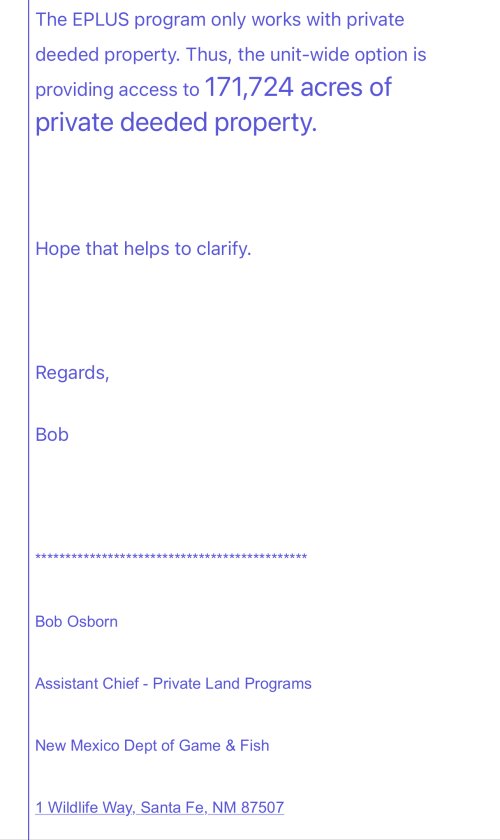Do tell. I’m not. Study up on the NM tag allocations and come back if you want to have an intelligent conversation. You are free to debate my opinion about the numbers. But you can’t make up that the numbers are incorrect with no evidence. That you posted the draw quotas as your evidence indicates how little you know about NM tag allocations.
The ranch codes are issued to the landowner first correct?
Then said landowner decides whether he wants to...
1. Use a ranch code himself
2. Give a ranch code to a family member, friend, etc..
3. Sell his ranch code to a family member, friend, etc..
4. Sell his ranch code to an outfitter, broker, NR, etc...
At the end of the day the original decision lies with the landowner(mostly residents), where the ranch code ends up after that is a mute point. A resident of New Mexico received the benefit of that ranch code in the majority of cases which is a benefit of being a stakeholder, some say a more vested stakeholder than a non landowner in New Mexico. To compare numbers from state to state when every state is different is pointless. The percentages of elk habitat, not land, that are public and private vary greatly in each state, there's just not an apples to apples comparison. It doesn't matter which program you pick someone is going to feel slighted, in this case it's the residents that don't own land eligible for ranch codes.





